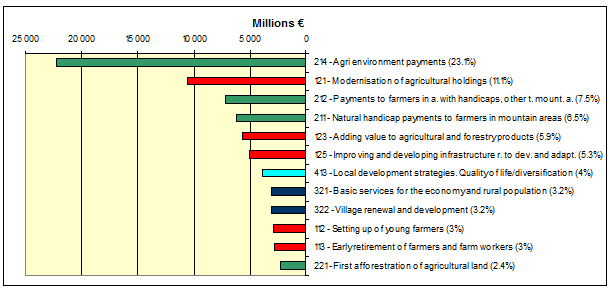A new Eurobarometer public opinion poll shows widespread support among European citizens for the Commission’s main CAP reform proposals. The poll, conducted by TNS Opinion and Social, interviewed 26,713 adults, enough for a representative sample in each member state.
The first question, concerning setting a cap on the amount of aid to the largest farms found that 47% of respondents favour a limit while 28% opposed a limit. 15 per cent didn’t know. Support for capping was strongest in Cyprus (+54%), Denmark (+36%), Finland (+33%) and Sweden (29%). Malta was the only country where more people thought a limit was a bad thing (-20%).… Read the rest

 Breakdown EU Rural Development spending 2007-2013
Breakdown EU Rural Development spending 2007-2013